How To Choose Solar Inverter In Ecuador?
 Dec 28,2024
Dec 28,2024

 XINDUN
XINDUN
Ecuador, a country located in the northwest of South America, is currently facing power supply crisis caused by severe drought. This crisis not only affects people's daily lives, but also has a serious impact on industrial production. The Ecuador power crisis is difficult to resolve in the short term, and power outages will become the norm in people's daily lives for a long time.
Drought and power outages also mean that solar inverters and solar power systems have huge potential market development in Ecuador. Solar energy is an inexhaustible natural energy source. Using solar power generation can effectively alleviate the problem of power shortage in Ecuador. Solar inverters are one of the core devices in solar power systems. How to choose Ecuador solar inverters? And how to build an Ecuador solar power system? In this article, Xindun will introduce them one by one.
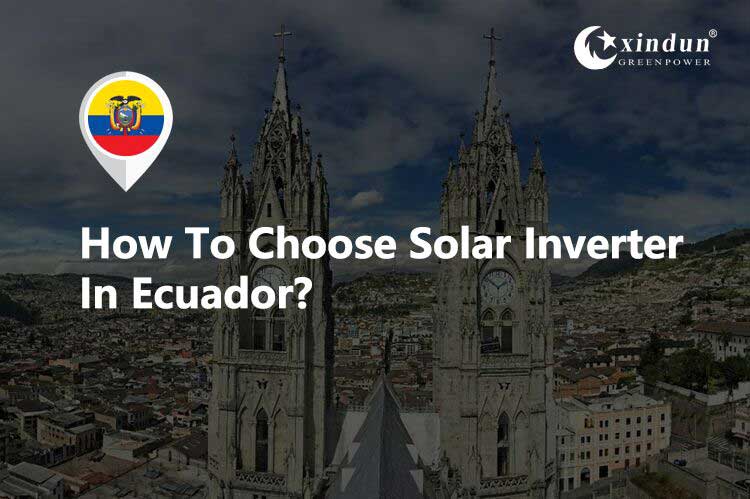
I.Ecuador's power structure
Ecuador's power supply mainly relies on hydropower and oil power generation. By the end of 2023, Ecuador's power grid installed capacity is 8.9 million kilowatts, of which hydropower accounts for 62.4%, thermal power accounts for 34.7%, wind power accounts for 0.9%, solar power accounts for 0.3%, and other renewable energy accounts for 1.7%. In 2023, Ecuador's total power generation was 35.36 billion kWh, of which hydropower accounted for 69.1%, thermal power accounted for 25.7%, imported electricity accounted for 3.6%, and other types of power generation accounted for 1.6%.
More than 70% of Ecuador's energy structure depends on hydropower, but due to the long-term drought in Ecuador in 2024, the drought is related to the El Niño weather phenomenon. The severe drought continues to reduce the water storage capacity of the reservoir of the hydropower plant, greatly reducing the production capacity. The drop in water levels will damage the turbines used for hydropower generation in Ecuador. Therefore, Ecuador has taken power restrictions to avoid the collapse of the national power system.
II. The serious power crisis facing Ecuador
In 2024, Ecuador has experienced several large-scale power outages, which have seriously affected people's daily lives and the operation and production of society.
National power outage accident. On June 19, 2024, Ecuador suffered a national power outage due to a transmission line failure, which lasted for 3 hours. The cause of the accident was a failure in a transmission line, which caused a power outage and spread to the entire power system.
Half of the provinces were out of power. On September 23, 2024, the Ecuadorian government announced that 12 of the 24 provinces would be out of power for 9 hours and issued a red alert for 19 regions due to drought causing the water level of hydroelectric power stations to drop, the existing dams lacked maintenance, and contracts were signed to ensure renewable energy power generation.
Power outages last 10 hours a day. On October 9, 2024, the Ecuadorian Ministry of Energy announced that due to the severe energy situation, the Ecuadorian government has activated the newly arranged power rationing measures, and will implement nationwide power restrictions from October 9 to 13, with a power outage duration of 10 hours a day. The Ministry of Energy of Ecuador said that the drought has caused the water level of the Mazar Hydropower Station in Azuay Province in the south of the country to approach the critical level.
The large-scale power outage will continue until December. On October 27, 2024, the Ministry of Energy and Mining of Ecuador announced that a week-long power outage will be implemented nationwide from the 28th, with a daily power outage time of up to 14 hours. The power shortage problem is expected to continue until November and may even continue into December. The Ecuadorian National Power Company has released a national power outage schedule for Ecuador, and the daily power outage time in various places will be between 10 and 14 hours.
Ecuador has been experiencing its worst drought in 61 years since September 2024. The drop in water levels in major hydroelectric power stations across the country has triggered an energy crisis. The drought has affected hydroelectric power stations and electricity imported from Colombia, further exacerbating the energy crisis. According to data from the Ecuadorian National Power Operator, the power gap is 1,080 megawatts. Large-scale power outages have greatly affected Ecuador's daily work and production activities. According to relevant data, every one-hour power outage across Ecuador will cause a loss of US$12 million.

III. Solar power generation - Ecuador's green energy transformation opportunity
Currently, the people of Ecuador are facing a 12-hour power outage every day, and the people are forced to adapt to the new normal. Although the Ecuadorian government has issued a number of announcements promising to solve the power problem, it still takes a lot of time to solve this crisis, and it cannot be solved in a short time. Faced with the problem of power supply, many Ecuador enterprises and factories have to maintain operation and production through self-provided generators in a short period of time. However, in addition to generators, which are backup emergency equipment, there is another emergency power source, that is, solar power generation. Solar power generation is not only an emergency power source, but also a common power source. Solar energy is an inexhaustible natural energy source. Solar power generation is green, clean and renewable energy form that can provide us with a long-lasting and reliable power supply. Using solar power generation can effectively alleviate the problem of power shortage.
Ecuador's energy crisis has also attracted the attention and response of the international community. In the current context of global renewable energy development, countries are seeking green transformation. Ecuador is located in the northwest of South America, in the equatorial zone that crosses the northern border. As a country with rich natural resources, most parts of Ecuador have long sunshine hours throughout the year, especially in coastal areas and highlands, where the solar radiation intensity is high and the conversion efficiency of solar energy is high. The average sunshine time per year can reach more than 2,000 hours, which provides a good natural foundation for solar power generation.
Under the trend of global low-carbon economy, this energy crisis may not be just a crisis. There are opportunities in every crisis. It can force Ecuador to accelerate the development of renewable energy, which can not only enhance the diversity of its energy supply, but also according to the data of the International Energy Agency, Ecuador has great potential in the development of renewable energy such as wind power and solar energy in the future, especially in solar power generation, which means that there is an immeasurable market prospect for solar power generation in Ecuador.
Drought? Although it will cause the river to dry up and the water level to drop, it also represents abundant sunlight resources! Power outage? Although it will affect the daily life and production operation of society, it also represents a huge market for solar energy products to invest in!
Ecuador has abundant solar energy resources and abundant sunshine. It is very suitable for Ecuadorians to install solar power system as backup power supply for their household electricity. The solar energy resources can be fully utilized to improve the electricity environment of Ecuadorians. Although Ecuador has sufficient sunshine overall, due to the influence of the rainy season, the intensity and duration of sunshine in some areas may fluctuate, which will also affect the stability of solar power generation. In the solar power system, the battery is part of the solar power system. When the solar power is insufficient on cloudy days and at night, the battery can be used as a supplement to provide load power supply.
IV. Ecuador's solar energy policies and trends in 2024
According to the latest news on November 4, 2024, the National Assembly of Ecuador unanimously passed a new law to promote private energy production in response to the ongoing energy crisis, which is characterized by mandatory nighttime blackouts. The Ecuador president urgently proposed the law for economic reasons to encourage renewable energy solutions and private sector investment. Private investment is allowed to participate in projects with a maximum power generation capacity of up to 100 megawatts, while the current upper limit is only 10 megawatts. The law also requires Ecuador's power companies to gradually implement plans to replace existing public lighting with LED and solar lights.
The bill also stipulates that public and private banks can provide loans at preferential interest rates for the implementation of renewable energy power systems for self-use. The bill stipulates that "these systems must allow beneficiaries to sell any surplus energy."
According to the latest data from the International Renewable Energy Agency (IRENA), Ecuador's installed solar capacity was only 31 megawatts by the end of 2023.
China donates rooftop solar project to Ecuadorian government
On November 15, 2024, PowerChina donated a rooftop solar project to the Ministry of Agriculture of Ecuador. In order to promote the comprehensive development of Ecuador solar and wind power resources and enhance people's awareness of new energy, China donated a rooftop solar project to the Ecuadorian government with an installed capacity of 62.1 kilowatts. After completion, it will provide sustainable clean energy support for the Ministry of Agriculture of Ecuador. The donation of the rooftop solar project also provides a new development direction for Ecuador's energy structure optimization and green development. Investors with keen business sense have smelled the solar investment opportunities in Ecuador in this donation of China's solar project.
V.Types of solar power systems suitable for Ecuador
There are two main types of solar power systems, one is on grid solar power system and the other is an off grid solar power system. We will focus on the off-grid solar power system.
Off-grid solar power system
An off-grid solar power system is an independently operated power supply system that does not rely on the public power grid. The system uses solar panels to collect light energy and convert it into electrical energy, and then stores the electrical energy for use at night or during power outages. When electrical equipment is needed, the direct current(DC) generated by the solar panels and the direct current(DC) stored in the battery are converted into alternating current output by the solar inverter to meet the power needs of various electrical equipment.
The core advantage of the off-grid solar power system lies in its independence and self-sufficiency, because it is equipped with energy storage batteries. It is not affected by grid failures and can provide continuous and stable power supply even in remote areas with frequent power outages or where the grid is not covered, such as rural areas or remote areas. For the current power shortage in Ecuador, installing an off-grid solar power system is undoubtedly an extremely suitable and practical choice.
In Ecuador, a country with abundant solar energy resources, installing an off-grid solar power system can greatly alleviate the electricity consumption problem of local residents. Whether during the power outage period or the power restoration period, residents no longer need to worry about power outages. Solar power generation and energy storage during the day can release the stored energy to supply power independently during the power outage period. When the power grid is restored, both normal power consumption and battery charging can be achieved, achieving full-day power consumption freedom.
On grid solar power system
The on grid solar power system is an efficient energy conversion and distribution solution that uses solar panels to capture sunlight and convert it directly into direct current. This DC power is then converted into AC power compatible with the public power grid through on grid inverter and connected to the grid system. This mechanism not only allows households or businesses to sell their excess electricity to the grid company, but also repurchase electricity from the grid when needed, realizing two-way circulation and optimal allocation of electricity.
The core advantage of the on grid solar power system lies in its ability to interact with the grid, forming a complementary model of power resources. Since no additional energy storage device is required, the system is more efficient in terms of economy and space utilization. It is especially suitable for cities and industrial areas with complete grid infrastructure and strong electricity demand, as well as for investment in medium and large solar power station projects.
However, for ordinary Ecuadorian families, on grid solar power systems are not a priority. The grid-connected system is completely dependent on the operation of the public power grid. Once power outage occurs in the power grid, the system will also stop working and cannot provide electricity to the family. In addition, the on grid system is usually not equipped with batteries, so the system will not be able to supply power on cloudy days, at night or when the power grid fails. Ecuador are currently facing power outages of up to 12 hours a day. For the continuous demand for electricity, the on grid solar power system is not very suitable for the current electricity consumption plan of Ecuador users.
Hybrid solar power system
In addition to the above two types of solar power systems, there is another type of hybrid solar power system.
The hybrid solar power system is a comprehensive power solution that integrates the advantages of off-grid systems and on grid systems. It not only ensures that when the power grid fails, the battery in the solar energy storage system can continuously supply power to the home and ensure uninterrupted power supply; it also allows users to sell excess electricity to the power company when the power is sufficient to achieve economic benefits. In addition, the system supports the grid and solar charging of the battery at the same time, which greatly improves the flexibility of the system. It realizes the two functions of self-sufficiency of electricity and access to the grid for surplus electricity, thereby maximizing the use of solar power generation and significantly improving the utilization efficiency of solar.
VI. What is the composition of an off-grid solar power system?
So how to form an off-grid solar power system in Ecuador? Off-grid solar power systems are usually composed of off-grid solar inverters, solar panels, solar controllers, batteries and other equipment.
Solar panels: Solar panels are the core components that convert solar radiation into electrical energy. They are usually composed of multiple solar panels combined to achieve the solar output power required by users.
Solar controller: Solar controllers are used to adjust the output voltage and current of the panels and control the charging and discharging of batteries. There are two types: MPPT and PWM.
Solar inverter: Off-grid systems require off-grid solar inverters. Inverters are type of power conversion device that converts direct current into alternating current(AC) for use by electrical equipment.
Batteries: Batteries are used to store the electricity generated by solar panels. When the electricity generated by solar panels is not enough to meet the load demand, it is supplemented by batteries. Common batteries in the system include lead-acid batteries and lithium batteries.
VII. What is the composition of Ecuador's off-grid solar power system?
The composition of the Ecuador off-grid solar power system has several different solutions in terms of system equipment. The main core equipment lies in the selection of off-grid inverter types. The following system composition equipment solutions can be used as a reference for Ecuador users:
Solution 1: Inverter + Solar Panel + Solar Controller + Battery
This solution is the most basic combination in off-grid solar power systems. The choice of equipment is relatively flexible and the cost is more cost-effective. For example, the inverter and solar controller. The inverter only needs a single DC to AC power conversion function, considering the output waveform such as pure sine wave or square wave, total power demand, output voltage and frequency and other parameters; solar controllers are of two types: PWM and MPPT. In terms of price, PWM controllers are cheaper than MPPT controllers, with simple control methods, strong anti-interference ability and better stability. The MPPT controller can quickly and accurately track the maximum power point of the solar panel, realize efficient energy conversion, support wide solar input voltage, and the conversion efficiency can be as high as 99%. It has perfect protection functions such as overcharge, overload, short circuit, etc., and supports communication connection for remote monitoring and other functions.
Solution 2: hybrid inverter + solar panel + battery
Hybrid inverter is also a kind of off-grid solar inverter. Unlike ordinary inverters that only have a single power conversion, it combines the functions of the inverter and the solar controller, simplifies the system structure, and can control the current and voltage of the solar panel to charge the battery, and can also convert the DC power generated by the solar panel and the DC power of the battery into AC power. Compared with ordinary inverters, the inverter-controller integrated machine has multiple working modes, and can switch the power source between solar/mains power or battery mode according to the power of solar and the power of the battery. It has high integration, high performance, comprehensive functions, and supports communication connection, which can remotely monitor and control the operating status of the system, and monitor in all directions, so that you can have full control.
Solution 3: all in one solar generator + solar panel
The all in one solar generator adopts all in one design, combining the functions of inverter, solar controller and battery. It is inverter that integrates inverter, charge and discharge control and energy storage functions. It simplifies the installation process of the system and saves the installation space of the system. Due to its portability and mobility, it is also suitable for various scenarios, such as outdoor camping, RV, home, industrial and commercial use. Only two devices, solar panels and inverter control and all in one solar generator, can quickly build an off-grid solar power system, bringing convenient and efficient energy solutions to various scenarios.
Xindun Power produces all the above off-grid solar power system equipment, whether it is solar inverters or solar controllers, solar panels, batteries and other equipment, Xindun can provide local traders in Ecuador with sources for users to choose from. If users do not know how to match and need to purchase, they can contact Xindun Power for consultation and recommend a suitable off-grid solar power system construction plan for Ecuador users.
Ⅷ. Recommended solar inverters for Ecuador
How to choose solar inverter in Ecuador? After introducing the off-grid solar power system, the next step is to choose solar inverter. The solar inverter is key part of the system. The solar inverter is power conversion device that converts the DC power generated by the solar panels and the DC power of the battery into AC power (common voltage 220V). Its performance and efficiency will affect the efficiency and stability of solar power generation. Off-grid solar inverters have different types and functions. For this reason, Xindun recommends the following solar inverters to Ecuador users, which can alleviate the current electricity shortage in Ecuador.
Xinudn LS Solar Inverter
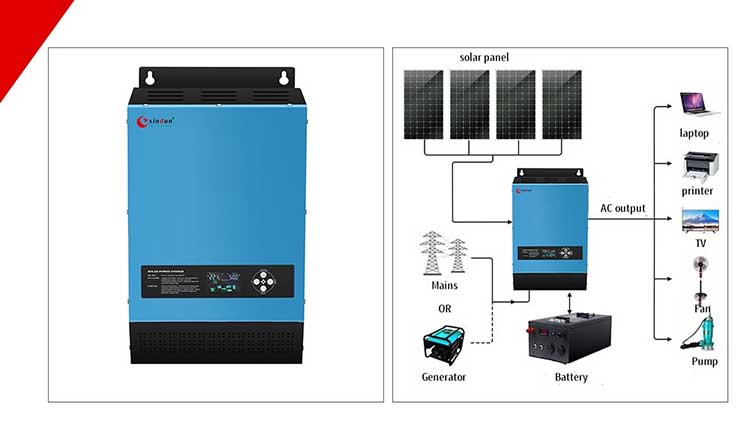
Xindun LS solar inverter 1000W-6000W, DC 12V/24V/48V to AC 110V/120V/220V/230V/240V
Xindun LS solar inverter is high-efficiency and stable inverter. It uses toroidal low-loss transformer, with high efficiency and energy saving. It has pure sine wave output at low frequency, and the output power is comparable to the mains, ensuring stable power quality. The output voltage and frequency can be set, and the dual output voltage can be 110V&220V, 120V&240V, especially suitable for some countries in South America with dual voltage. Built-in MPPT controller and inverter control. Suitable for industrial and civil fields, wall-mounted design, easy installation, widely used in various places.
Xindun WD Solar Inverter
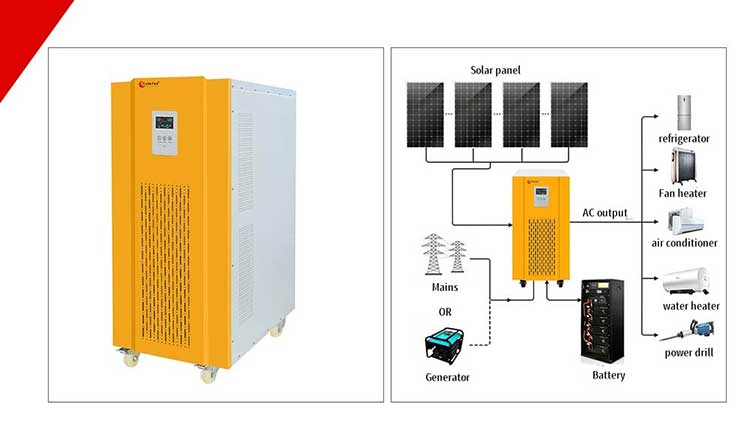
Xindun WD Solar Inverter 8kW-40kW, DC 96V/192V/240V/384V to AC 110V/120V/220V/230V/240V
Xindun WD solar inverter with pure sine wave output at low frequency. It is not only suitable for home use, but also high-power solar inverter for industrial and commercial use. It also has dual voltage output function. It adopts toroidal low-loss transformer, with high inverter efficiency and energy saving. It has pure sine wave output at low frequency to ensure stable power quality. The built-in MPPT controller not only supports AC input, but also supports diesel (gasoline) generator input, and has the function of voltage and frequency stabilization output. It provides adjustable AC priority and inverter priority working mode settings, with fully automatic and perfect protection functions, starting peak power of more than 3 times, and can automatically shut down for protection under various abnormal conditions to ensure the safety of equipment and users.
Xindun ESS-LI all in one solar generator
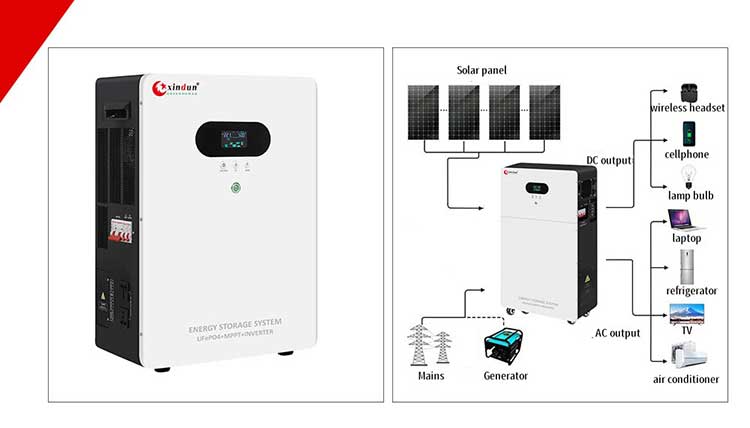
Xindun ESS-LI all in one solar generator 300W-7000W, DC 12V/24V/48V to AC 110V/120V/220V/230V/240V
Xindun ESS-LI all in one solar generator is portable, plug-and-play, easy-to-install solar inverter. It adopts an integrated design and integrates solar controller, inverter, and lithium battery into all in one solar generator, which simplifies the installation and use process of the system and is more convenient to use. It adopts a low-loss power frequency transformer, efficient inverter conversion, and pure sine wave output at power frequency, providing powerful and stable output capabilities to ensure the stable operation of the equipment. It provides a variety of output type interfaces to support AC sockets, round hole DC sockets (12V) and DC USB sockets (5V) DC output to meet the types of plug-in ports for different devices. It uses LiFePO4 lithium iron phosphate batteries, which charge faster and store more energy efficiently. Supports three charging methods, solar/mains/generator charging. Xindun ESS-LI all in one solar generator only needs to be connected to the solar panel to quickly form an off-grid solar power system!
Xindun HDSX three-phase solar inverter
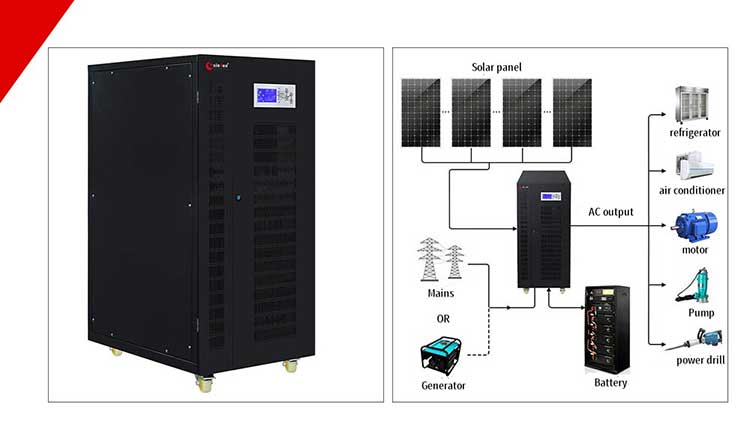
Xindun HDSX three-phase solar inverter 3.2kW-160kW, DC 48V/96V/192V/384V to AC 380V/400V
Xindun HDSX three-phase solar inverter is very suitable for industrial and commercial use. For Ecuador industrial and commercial users, high-power and stable output inverters are generally required. This three-phase solar inverter is designed to meet high-power and high-load industrial applications, with excellent conversion efficiency and stable output performance. It has three-input and three-output functions, adapts to a variety of battery type configurations, meets diverse power needs, can easily cope with complex and changing industrial scene requirements, and provides stable and reliable power guarantees for corporate users. At the same time, Xindun HDSX three-phase solar inverter also has UPS power supply function, which stabilizes the mains power and supplies it to the load when the mains power is normal, and charges the battery at the same time. When the mains power is interrupted, the DC power of the battery is immediately switched to AC power through the inverter to provide continuous and reliable power support.
IX. Xindun Solar Inverter Manufacturer
Founded in 2006, Xindun Power is a professional solar power system manufacturer that has been deeply engaged in the innovation and development of solar inverters. As Chinese solar inverter manufacturer, Xindun has continuously gained the trust and praise of global customers with our excellent product quality and technical strength. Xindun's solar inverters have been exported to more than 100 countries and regions around the world, and have become the trusted choice and OEM base of many overseas dealers. Xindun Power has always been committed to promoting the application and development of green energy and providing efficient and reliable solar energy solutions for global customers.
Headquartered in Foshan, Guangdong, China, Xindun Power has a research and development team of dozens of elite engineers, who continue to increase product research and development and innovation to promote the continuous advancement of solar inverter technology. Strictly control product quality, Xindun Power strictly implements ISO9001 quality management system standards. From raw material procurement to finished product delivery, each process is strictly inspected to ensure that each inverter can meet international standards and market demand for high-quality products, ensuring product performance is excellent, safe and reliable.
Xindun Power has a variety of solar products, such as on grid and off grid hybrid inverters, low frequency/high frequency inverters, all in one solar generator, and three-phase solar inverters, covering solar inverters with different power specifications from 300W to 160kW, as well as MPPT/PWM solar controllers, solar panels, lithium batteries/lead-acid batteries and other solar power system products. Xindun Power's product line covers various application scenarios from home to industrial and commercial use, which can meet the diverse needs of Ecuador customers.
Xindun Power also provides users with customized product services. According to the specific needs of customers, we tailor OEM products that meet the needs of the Ecuador market, including appearance design, logo design, voltage, power and other special parameters to meet the product needs of Ecuador customers. At the same time, we also provide all-round support from product design, production to after-sales, to ensure that customers can enjoy professional and efficient services throughout the cooperation process.
The above is about how to choose solar inverters in Ecuador. I hope this article will be helpful to Ecuador customers in choosing solar inverters and solar power systems. If you want to cooperate with Xindun or purchase solar inverters and other products, you can leave your information and needs in the customer service window at the bottom of the website(http://www.xinduninverter.com), and Xindun will contact you as soon as possible during working hours.

 Solar Inverter
Solar Inverter





 Hybrid Inverter
Hybrid Inverter
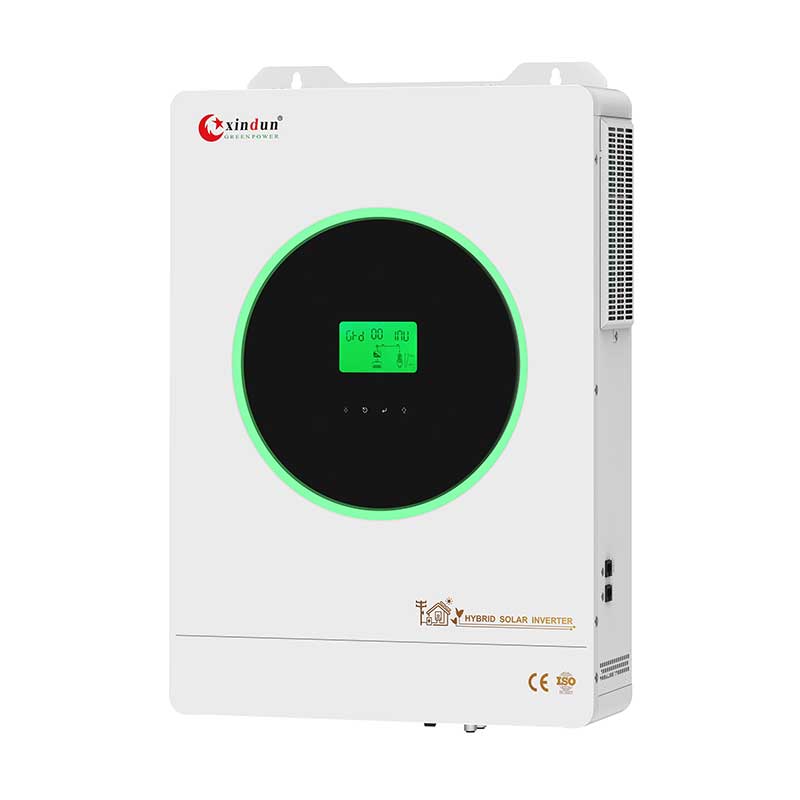
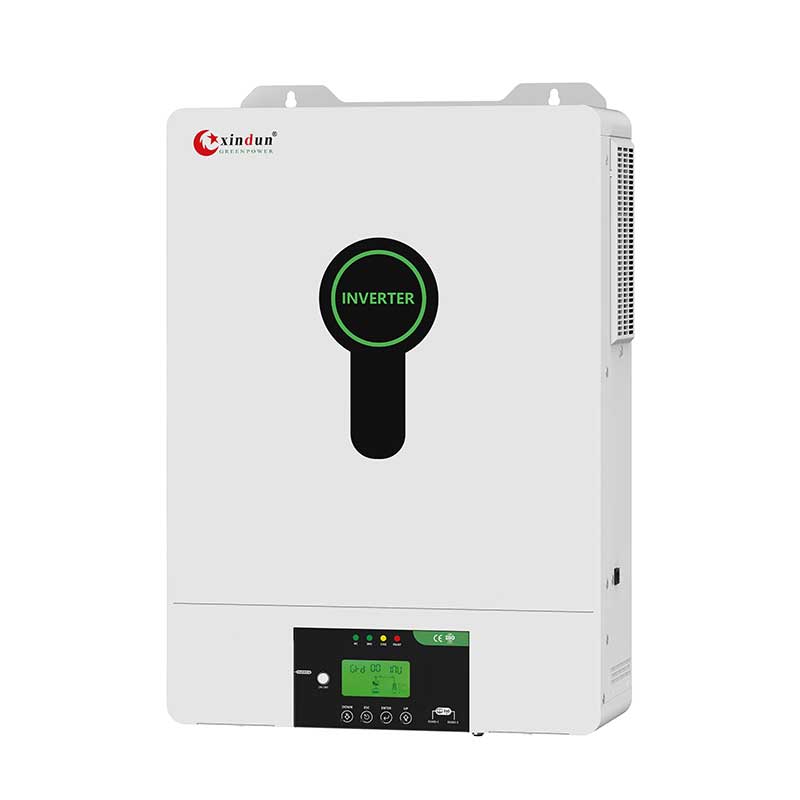


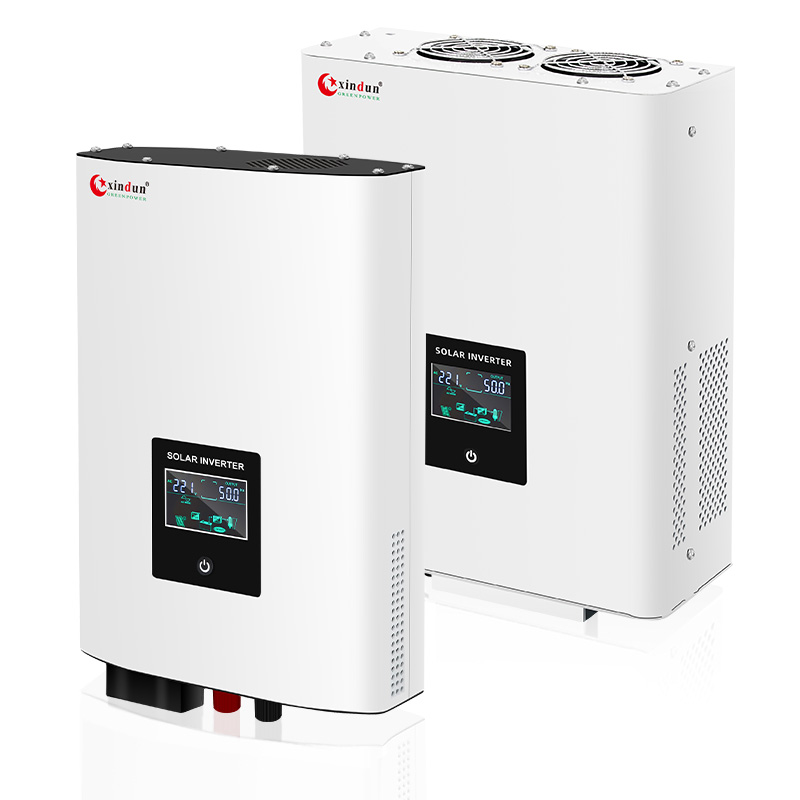
 Power Inverter
Power Inverter
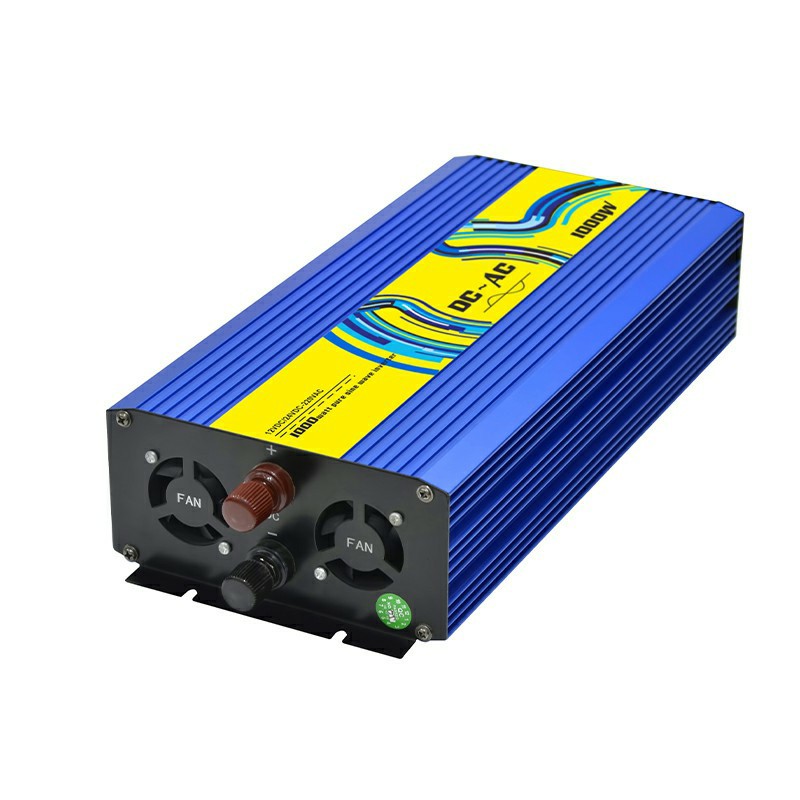


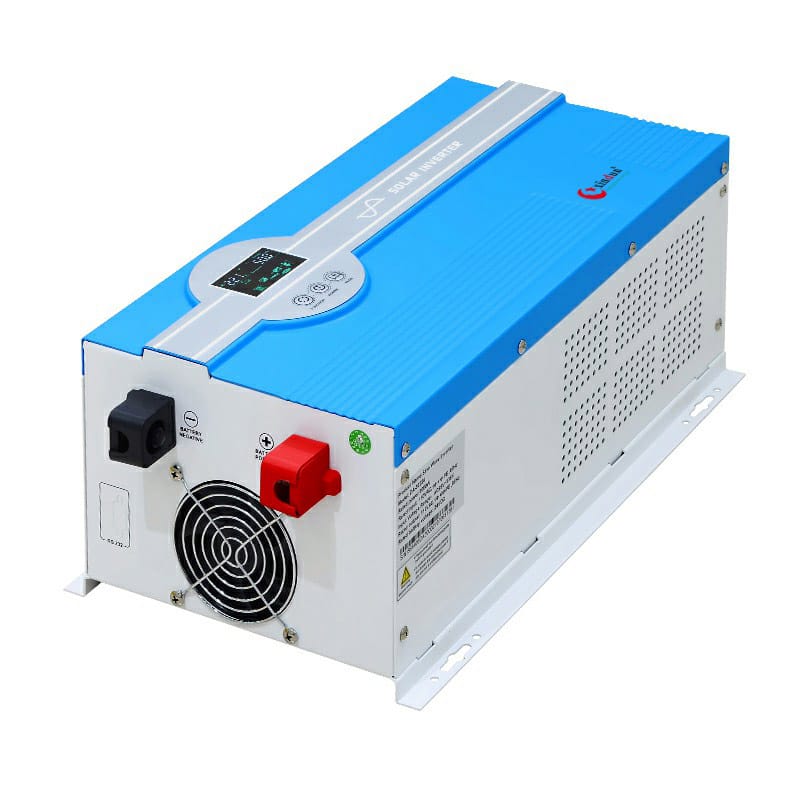
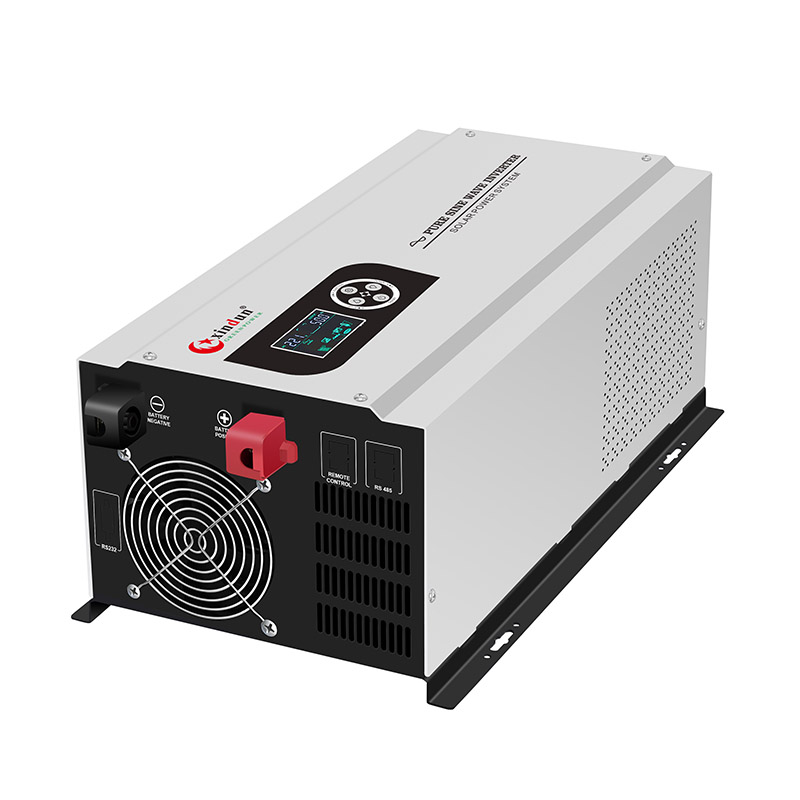
 Split Phase Inverter
Split Phase Inverter

 Energy Storage Inverter
Energy Storage Inverter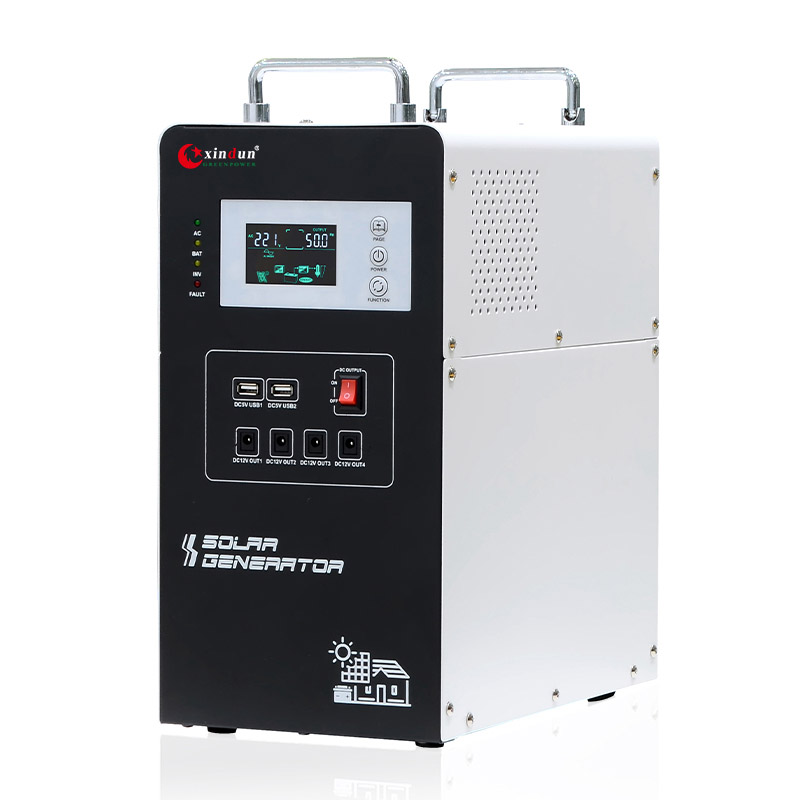




 3 Phase Inverter
3 Phase Inverter
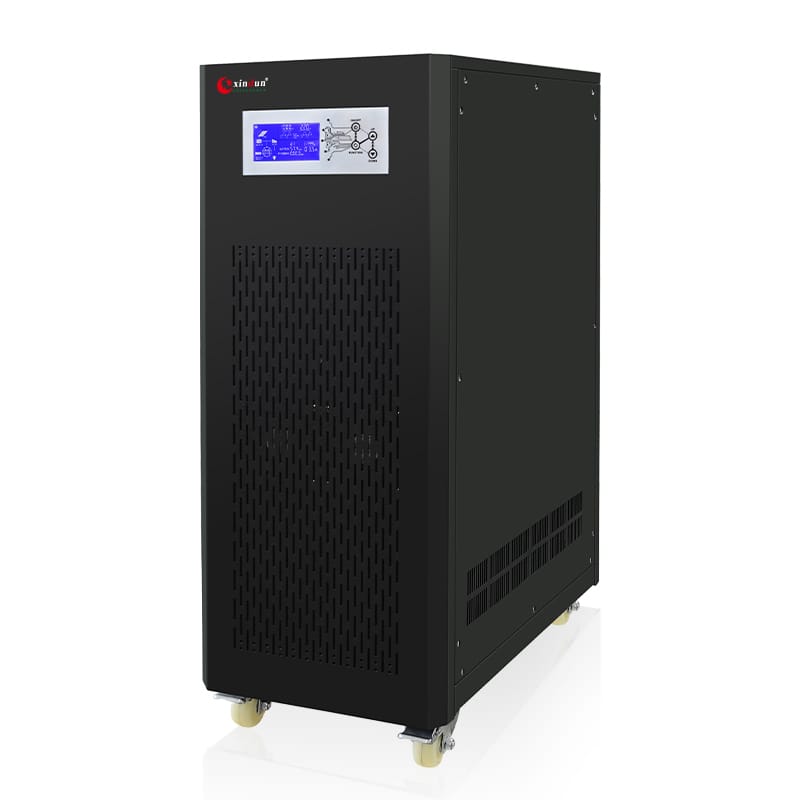



 Solar System Kits
Solar System Kits





 Solar Charge Controller
Solar Charge Controller
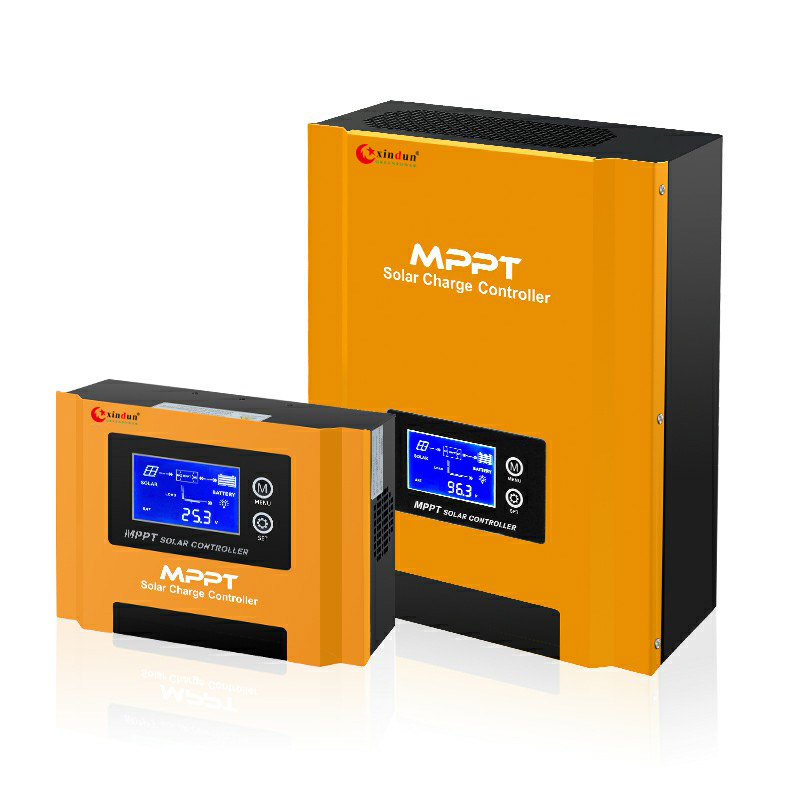

 Solar Battery
Solar Battery



 Asia
Asia
 Africa
Africa



 South America
South America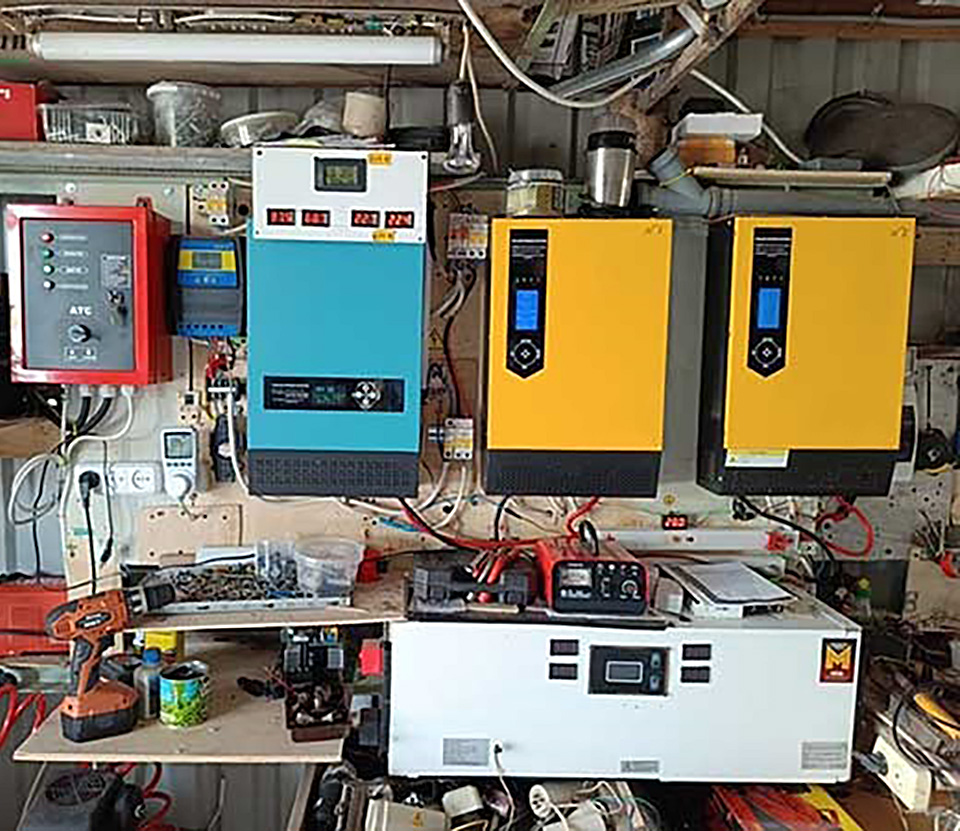
 Europe
Europe

 North America
North America

 Oceania & Antarctica
Oceania & Antarctica










 Home
Home Solar Power System Recommendations In Syria
Solar Power System Recommendations In Syria  Top Selling Products
Top Selling Products














